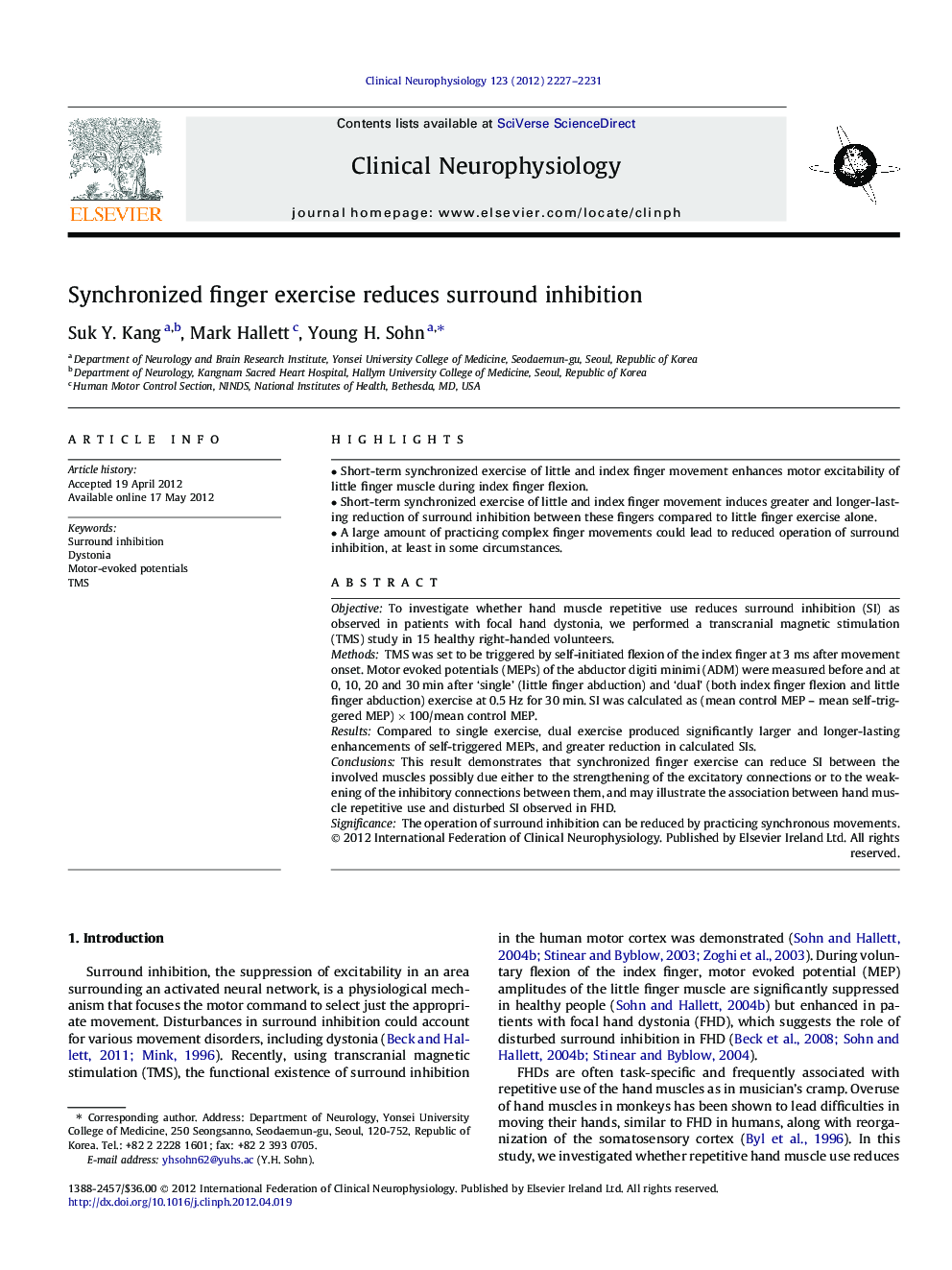| Article ID | Journal | Published Year | Pages | File Type |
|---|---|---|---|---|
| 3043113 | Clinical Neurophysiology | 2012 | 5 Pages |
ObjectiveTo investigate whether hand muscle repetitive use reduces surround inhibition (SI) as observed in patients with focal hand dystonia, we performed a transcranial magnetic stimulation (TMS) study in 15 healthy right-handed volunteers.MethodsTMS was set to be triggered by self-initiated flexion of the index finger at 3 ms after movement onset. Motor evoked potentials (MEPs) of the abductor digiti minimi (ADM) were measured before and at 0, 10, 20 and 30 min after ‘single’ (little finger abduction) and ‘dual’ (both index finger flexion and little finger abduction) exercise at 0.5 Hz for 30 min. SI was calculated as (mean control MEP – mean self-triggered MEP) × 100/mean control MEP.ResultsCompared to single exercise, dual exercise produced significantly larger and longer-lasting enhancements of self-triggered MEPs, and greater reduction in calculated SIs.ConclusionsThis result demonstrates that synchronized finger exercise can reduce SI between the involved muscles possibly due either to the strengthening of the excitatory connections or to the weakening of the inhibitory connections between them, and may illustrate the association between hand muscle repetitive use and disturbed SI observed in FHD.SignificanceThe operation of surround inhibition can be reduced by practicing synchronous movements.
► Short-term synchronized exercise of little and index finger movement enhances motor excitability of little finger muscle during index finger flexion. ► Short-term synchronized exercise of little and index finger movement induces greater and longer-lasting reduction of surround inhibition between these fingers compared to little finger exercise alone. ► A large amount of practicing complex finger movements could lead to reduced operation of surround inhibition, at least in some circumstances.
